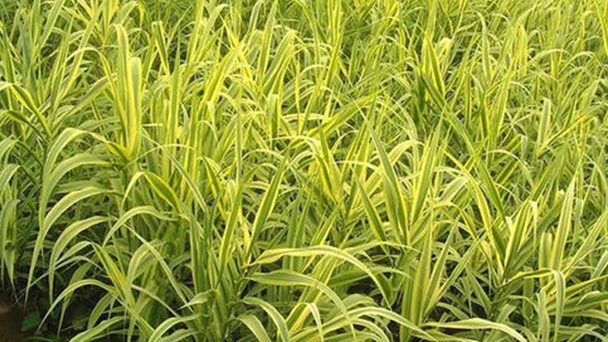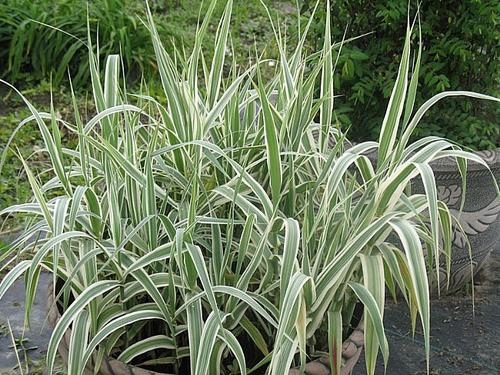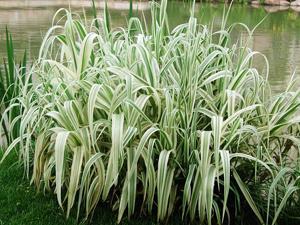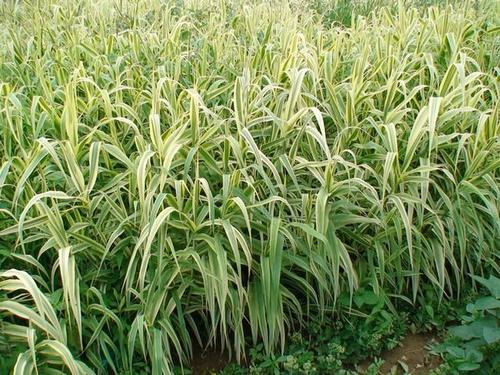Giant reed profile
Written by Maggie
Dec 21 2020

Arundo donax is a tall perennial cane. It is one of several so-called reed species. It has several common names including giant cane, elephant grass, carrizo, arundo, Spanish cane, Colorado river reed, wild cane, and giant reed.
Giant Reed picture

Giant Reed morphological characteristics
Giant Reed is a perennial herb with a well - developed rhizome. Culms are thick and erect, 3 -- 6 m tall, (1-) 1.5 -- 2.5 cm in diameter.. Tough, with many nodes, often branching.
Leaf sheaths are longer than internodes glabrous or pilose at neck; Tongue truncated, ca. 1.5 mm, apex with short cilia; giant reed leaf blade is flat, leaf blade elongate, with white longitudinal striations, upper with margin slightly coarsely, base white, clasping stem.
Panicles are extremely large, 30-60 (-90) cm long, 3-6 cm wide, densely branched, obliquely ascending; The spikelet is 10-12 mm; With 2-4 florets, cob nodes ca. 1 mm long; Palea midvein is extending to 1 -- 2 mm short awn, abaxial middle subdensely pilose, 5 -- 7 mm long, base plate ca. 0.5 mm long, upper side pubescent, first lemma ca. 1 cm; The palea is about half as long as the outer scale; Giant Reed has 3 Stamens, caryopses fine black. Flowering & Fruiting period is from September to December.
Giant Reed habitat
Giant Reed is native to the Mediterranean region and cultivated in Guangdong, Hainan, Guangxi, Guizhou, Yunnan, Taiwan and other southern regions of China.
Giant Reed often grows in large areas along rivers, marshes and lakes. Giant Reed is light - loving, warm - loving, water - resistant, drought - resistant and strong light, loose, fertile and well-drained sandy loam.

Giant Reed propagation method
Plant splitting: Giant Reed can be divided and propagated. In spring and autumn, the small plants can be directly cut off and planted in a pot or directly planted in the ground. However, the propagation coefficient of plant division propagation is low and the speed is slow, which cannot meet the demand of seedlings for afforestation.
Cutting: cutting seedling selection in spring and autumn season, temperature, humidity appropriate.Select growth, robust, no plant diseases and insect pests of giant reed leaves stems as cuttings. Cut off the upper twigs, cut off the lower old branches, return the middle 20 -- 25 cm, 3-4 section, with rooting agent after soaking, inclined insert ready breeding nursery, soil depth of about 15 centimeters, aboveground 10 centimeters, field seedling plant row spacing in a 20 x 20 cm. The seedling bed should pay attention to the moisture, cutting the same day watering permeable. After watching the weather to master the amount of watering, dousing 2-3 times a day on sunny days, dousing 1-2 times a day on cloudy days, until the roots, dousing once a day after the roots, with 80% sunshade net cover, enhance the effect of moisturizing and promoting roots. When the seedling height is 15-20 cm, 6-7 leaves and the root system reaches 10 cm, it can be transplanted.
Giant Reed cultivation technique
Leveling the seedling raising land: Before the seedling raising of asparagus lettuce, the seedling raising land should be leveled. During the leveling, 667 square meters of soil should be applied with 2000-2500 kg of mature farm manure. In addition, 50 kg of nitrogenous, phosphorus and potassium compound fertilizer should be spread evenly.Irrigate water to the field surface 10 cm or so, prepare for seedling
Colonization: Two-row planting with variable-leaf asparagus patch, 40 cm apart, 667 square meters, 2000-2200 plants.Irrigation of slow seedling water in time after transplanting.
Management: In order to avoid burning leaves in the seedling stage, cutting should cover the sunshade net after cutting, which can cool down and reduce transpiration of cuttings leaf surface. After slow seedling, timely pour water once, keep a certain water surface, and can not lack water. If the temperature is high, carry out foliar spray. Apply in time strong seedling fertilizer, 667 square meters apply urea 10 kilograms, promote the growth of branches. Weeds should be pulled out in time to prevent them from competing with seedlings for nutrients.
Giant Reed pest control
Giant Reed is mainly used to prevent and control starscream. It can be sprayed with 0.1% oxydimego once every 20 days.

Giant Reed main value
Giant Reed has been widely planted in landscape plants, which is mainly used for background greening of waterscape gardens. It can also be decorated around Bridges, pavilions and pavilions, and potted for garden viewing. The stem is tall and straight, shaped like bamboo. Yellow and white stripes alternate with leaves in early spring, followed by green stripes, and new leaves in midsummer are green. The inflorescence may be used as a cut flower.
Latest Updated
- Benefits of Bugleweed - 7 Science-backed Health Benefits
- Bugleweed Dangers & Side Effects - Is It Poisonous?
- How to Plant Evergreen Trees - What You Should Know
- When to Plant Evergreens - Grow Guide for Evergreen Trees
- 12 Wonderful Evergreen Shrubs for Your Garden
- 12 Popular Evergreen Plants with Pictures for Beginners
- When And How To Prune A Lilac Bush Like a Pro
- How to Grow & Care for Lilac Vine (Hardenbergia Violacea)
- Japanese Lilac Tree (Syringa Reticulata) Care & Propagation Guide
- Shumard Oak Pros and Cons - What to Know
Popular Articles
- Winter maintenance of Antirrhinum Majus
- How to Grow Terminalia Mantaly Tree
- How to Grow and Care for Crossostephium Chinense
- How to grow Antirrhinum Majus in spring
- Peristeria Elata (Dove Orchid) Profile: Info & Care Guide
- Underwatered Snake Plant (Sansevieria Trifasciata) - Signs And How To Fix
- How to Care for Brazilian Jasmine Plant (Mandevilla Sanderi)
- How to Grow & Care for Graptopetalum Purple Delight in Summer
- Rosa Chinensis (China Rose): Plant Growing & Care Tips
- How to Care for Baby Sun Rose (Aptenia Cordifolia)